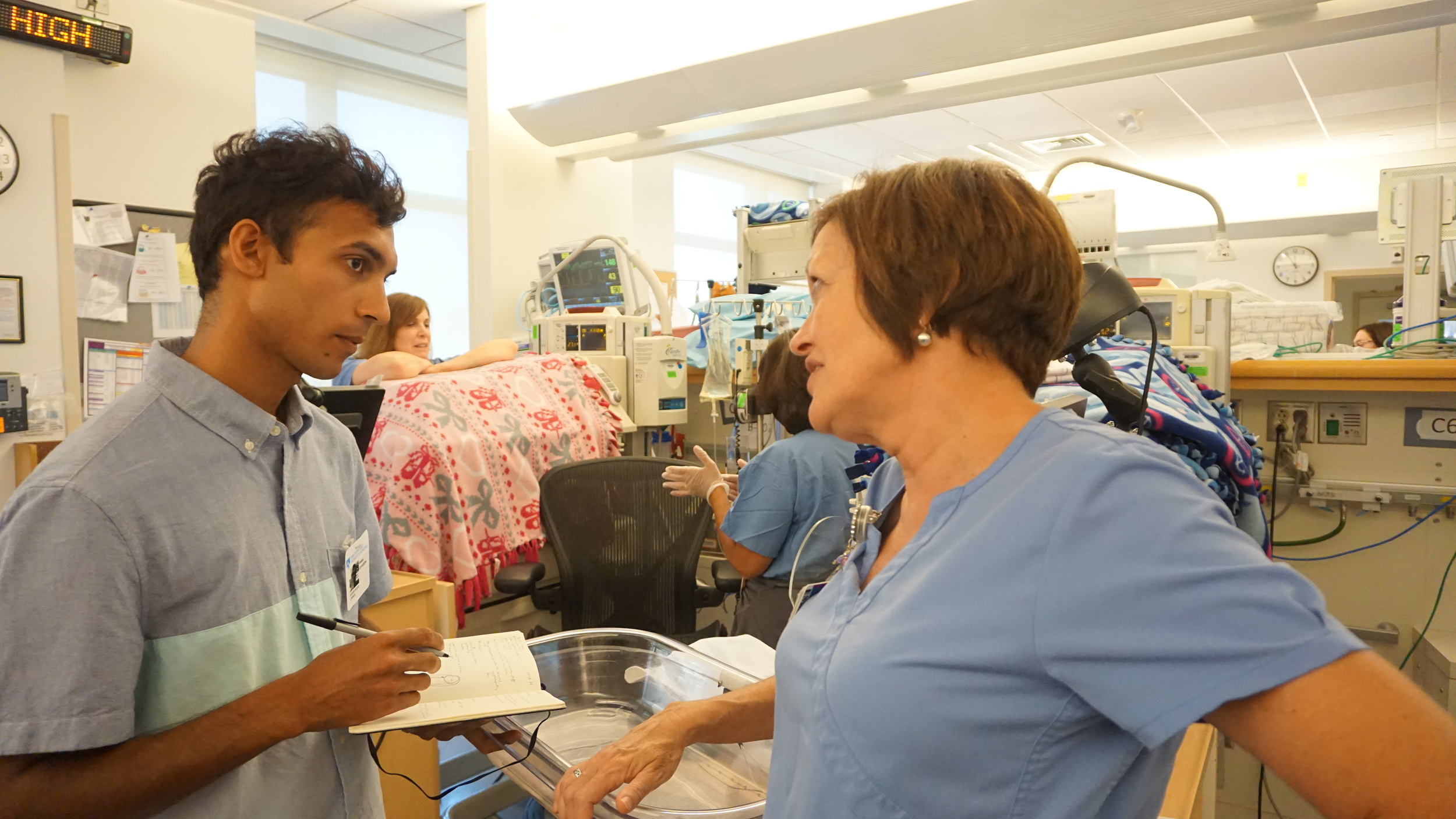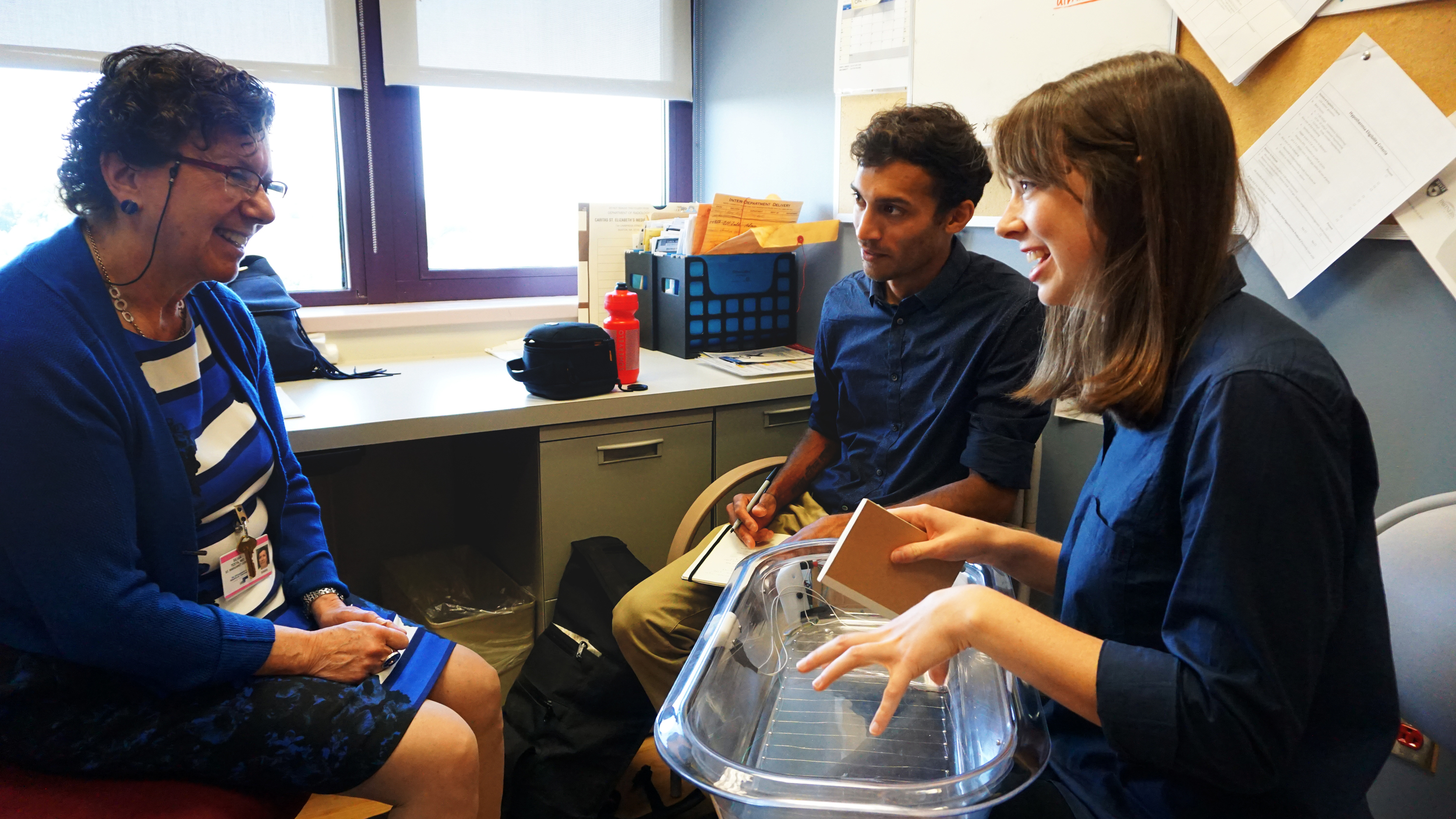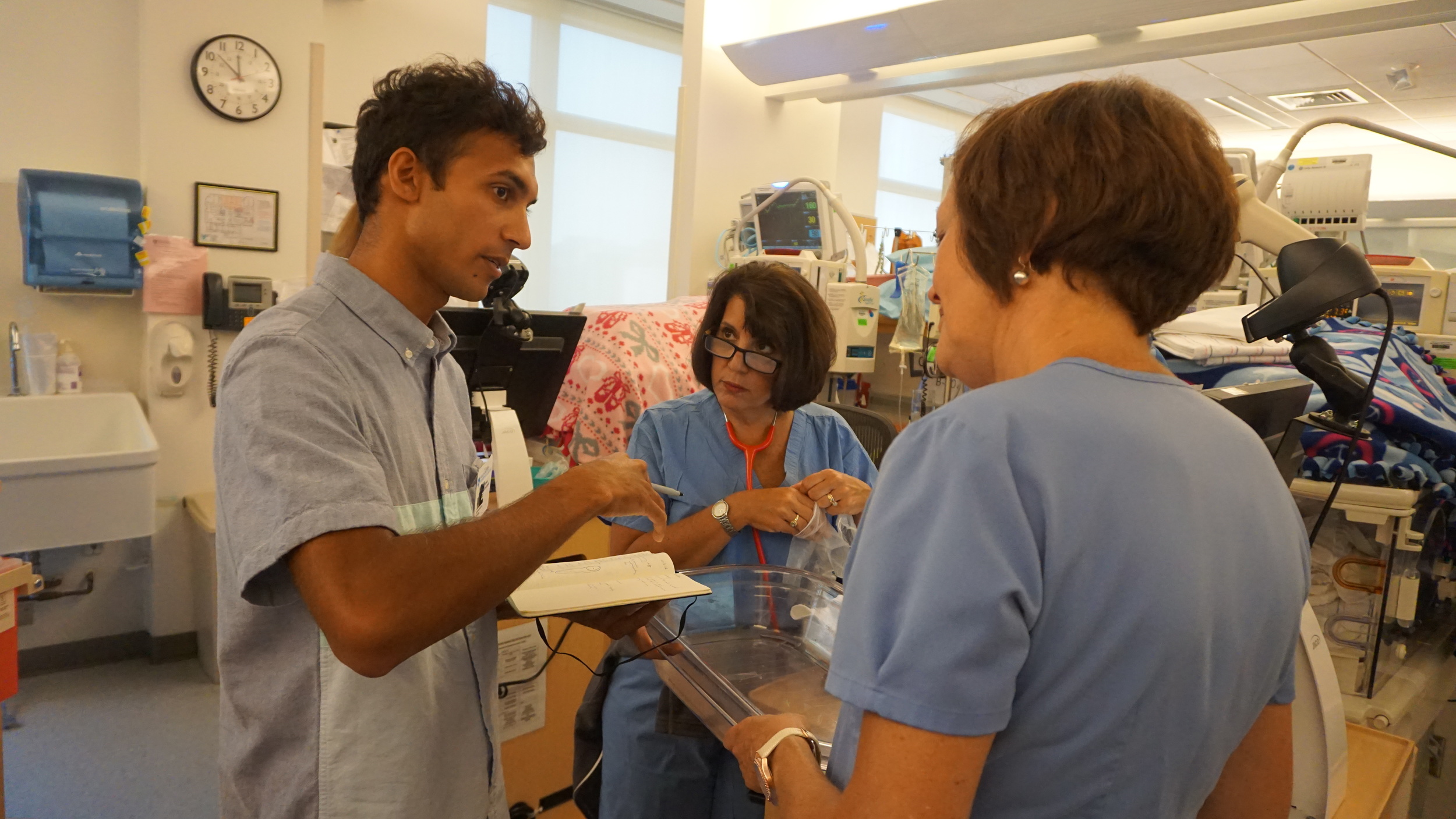This summer, DtM is focused on developing an “alpha prototype” of the Otter newborn warmer, which is to say the first generation prototype that integrates both how the product works (warming elements) and how the product looks (user interface and overall aesthetics). A great alpha prototype anticipates both user needs expectations and product performance specifications, as well as manufacturing methods and the target price point. Here’s a quick summary of what we’ve been doing most recently!
Thank you to our hosts at MGH, St. Elizabeth’s Medical Center, and The Brigham and Women's Hospital. Special thanks to:
- Ryan Carroll, MD, MPH, Program Director for the MGH-MUST Collaborative in Uganda
- Steve Ringer, MD, PhD, Chief of Neonatology at Dartmouth-Hitchcock Medical Center
- Terri Gorman, MD at The Brigham and Women's Hospital
- Lilian O’Leary, Nurse at The Brigham and Women’s Hospital
- Silvia Testa, MD at St. Elizabeth’s Medical Center
- Elizabeth Johansen, DtM Alumni
- Luciano Moccia at Thrive Health and Greg Dajer at MTTS Asia
- Peter Chamberlain from the 2015 MIT-RISD PDD student team
- James Wall, MD
- Lou Halamek, MD, Lucile Packard Children’s Hospital
- Janene Fuerch, MD, Lucile Packard Children’s Hospital
Some of the key insights from research include:
- Otter is for the prevention, not the treatment, of hypothermia
- The lack of prenatal care means that it will be difficult to accurately assess a newborn’s gestational age, so we need an alternative criteria to identify newborns that are appropriate patients for conductive warming.
- The ability to visually monitor at-risk newborns is as important to survival as warmth, so Otter must not obstruct a caregiver’s line of sight.
See the article on the product point of view for how these insights inform the product hypothesis.
One tool we used in these interviews is called a “sacrificial concept”. The idea is to exaggerate different product features as a way better understand the intuitive responses we get from users and domain experts. In this case, we were aiming to prioritize qualities of a medical product by presenting polarized feature options and asking doctors to choose between them. The first set is exploring forms of comfort. The second compares the trade-offs and implications of side wall height, and the last set looks into the importance of perceived infant safety versus the need for access to the newborn.
This week we welcomed Kristen Moulton as a Clinical Fellow to the summer design team. Kristen is a second-year medical student at Philadelphia College of Osteopathic Medicine. She recently completed the Summer Medical Institute, where she volunteered to provide healthcare screenings to an underserved community in North Philadelphia. Prior to starting medical school, she held a 2-year research coordinator position at the National Institutes of Health. She investigated biomarkers and potential therapeutics for Fragile X Syndrome (FXS), the most common inherited form of autism. Two of her research projects were published in peer-reviewed journals, one in Human Mutation and another in Behavioural Brain Research. Kristen graduated from Amherst College in 2013 with a Bachelor of Arts in Neuroscience with honors. She was selected as a Howard Hughes Fellow, inducted into the Sigma Xi Scientific Research Society, and was named a NESCAC All-Academic Honoree for both cross country and track. Kristen is excited to begin medical research and improve health with the DtM team.





